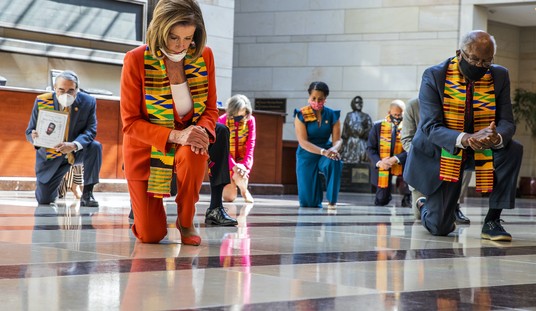Call it hope and change, 2010 midterms style — or maybe Teapocalypse. Republicans managed to preserve a majority in both chambers of Congress and re-elect a President in 2004 while trailing in party identification by three points in the annual Gallup survey. How will they do while trailing by a single point in 2010?
The advantage in public support the Democratic Party built up during the latter part of the Bush administration and the early part of the Obama administration has all but disappeared. During the first quarter of 2010, 46% of Americans identified as Democrats or leaned Democratic, while 45% identified as or leaned Republican.
The latest results, based on aggregated data from Gallup polls conducted from January to March of this year, show the closest party division since the first quarter of 2005, when the parties were tied at 46%. Democrats enjoyed double-digit advantages in party support in 11 of 12 quarters from the second quarter of 2006 to the first quarter of 2009.
By the end of last year, the Democratic advantage had shrunk to five points (47% to 42%), and it narrowed further in the most recent quarter.
The news isn’t all good for Republicans, however:
The six-point rise in Republican support since the first quarter of 2009 is due entirely to a growing proportion of independents who lean to the Republican Party, rather than an increase in the percentage of Americans who identify as Republicans outright. (Gallup measures party identification by first asking Americans whether they identify as Republicans, Democrats, or independents. Those who are independent or express no party preference are then asked whether they lean more toward the Democratic or the Republican Party.)
In fact, the 28% of Americans who initially identify as Republicans today is identical to the figure Gallup measured in early 2009, when the Democrats still had a double-digit advantage in support. Since then, there has been a three-point reduction in the proportion of Democratic identifiers, and a three-point decline in the percentage of Democratic-leaning independents.
Democrats have lost almost all of a 13-point gap among all adults in just a year — a number that was already inflated in favor of Democrats. After all, the gap Gallup detected in 2008 was actually fourteen points, but Barack Obama won office by just half of that number in the national popular vote. That counted a great deal of independent support as well as some limited Republican voter crossover, too. Independents are now crossing back over the other way, which will make the midterms a lonely ride for Democrats.
That would tend to indicate that in practical terms, GOP identification has already surpassed the Democrats. Rasmussen’s last poll in March put the GOP down by less than 3 points, and that was before the passage of ObamaCare. This survey indicates that rather than seeing a bump for getting their health-care overhaul passed into law, Democrats may have instead thrown gasoline on a fire that was already burning out of control.
What will media pollsters do now? Surveys from NBC, the Washington Post and ABC, and CBS routinely feature wide partisan gaps favoring Democrats in their sampling, although CBS appears to have tried lately to fix that problem. This is just another piece of evidence to use to expose inherent bias in some media polling, unless they start cleaning up their acts.








Join the conversation as a VIP Member